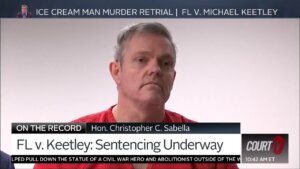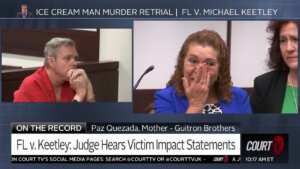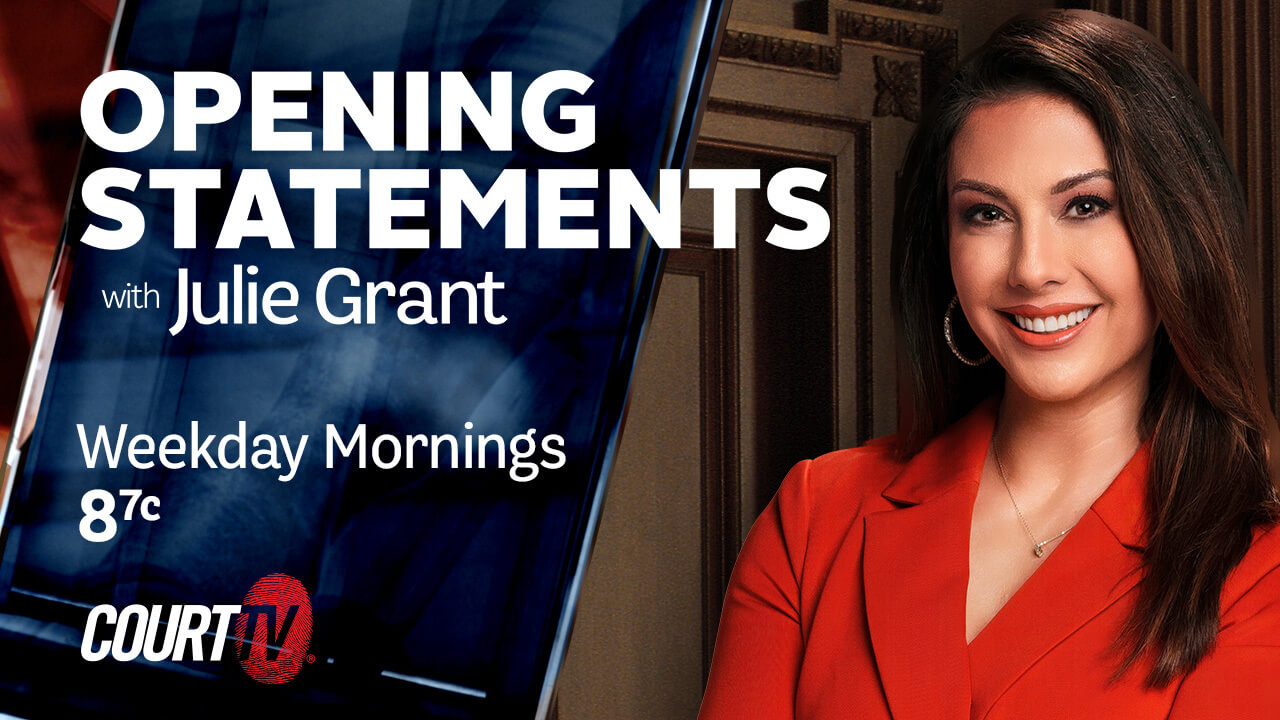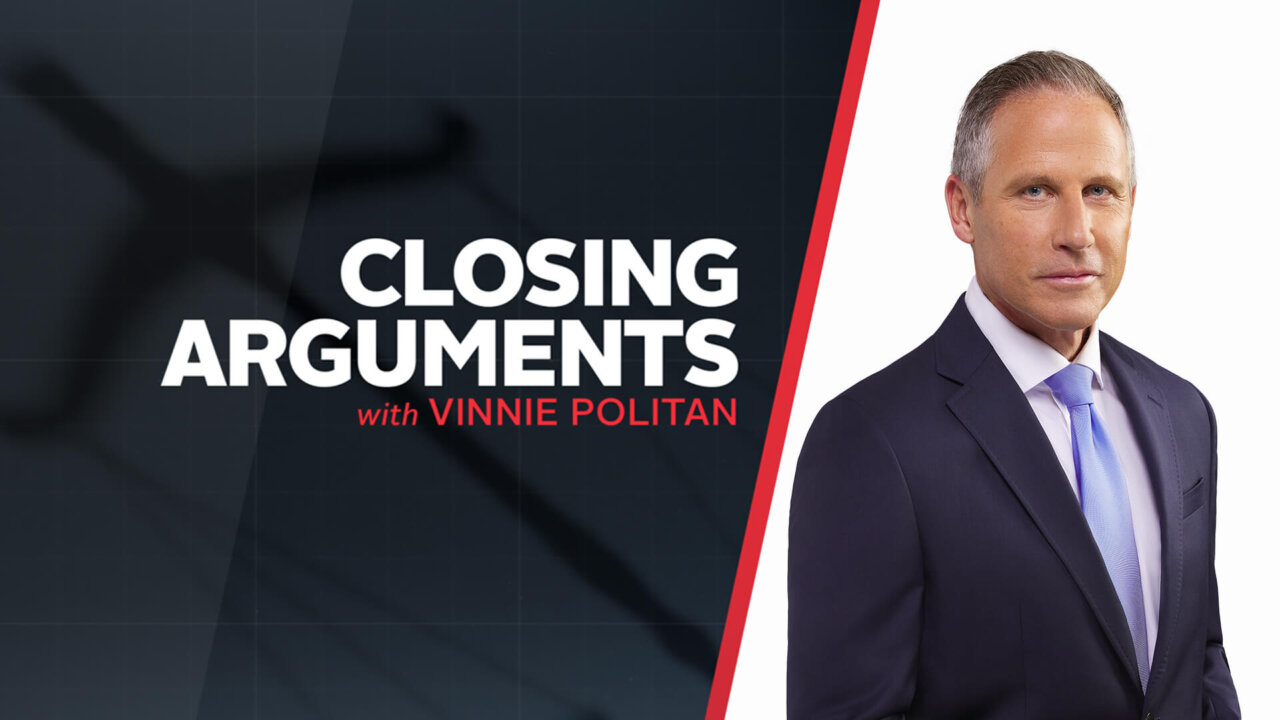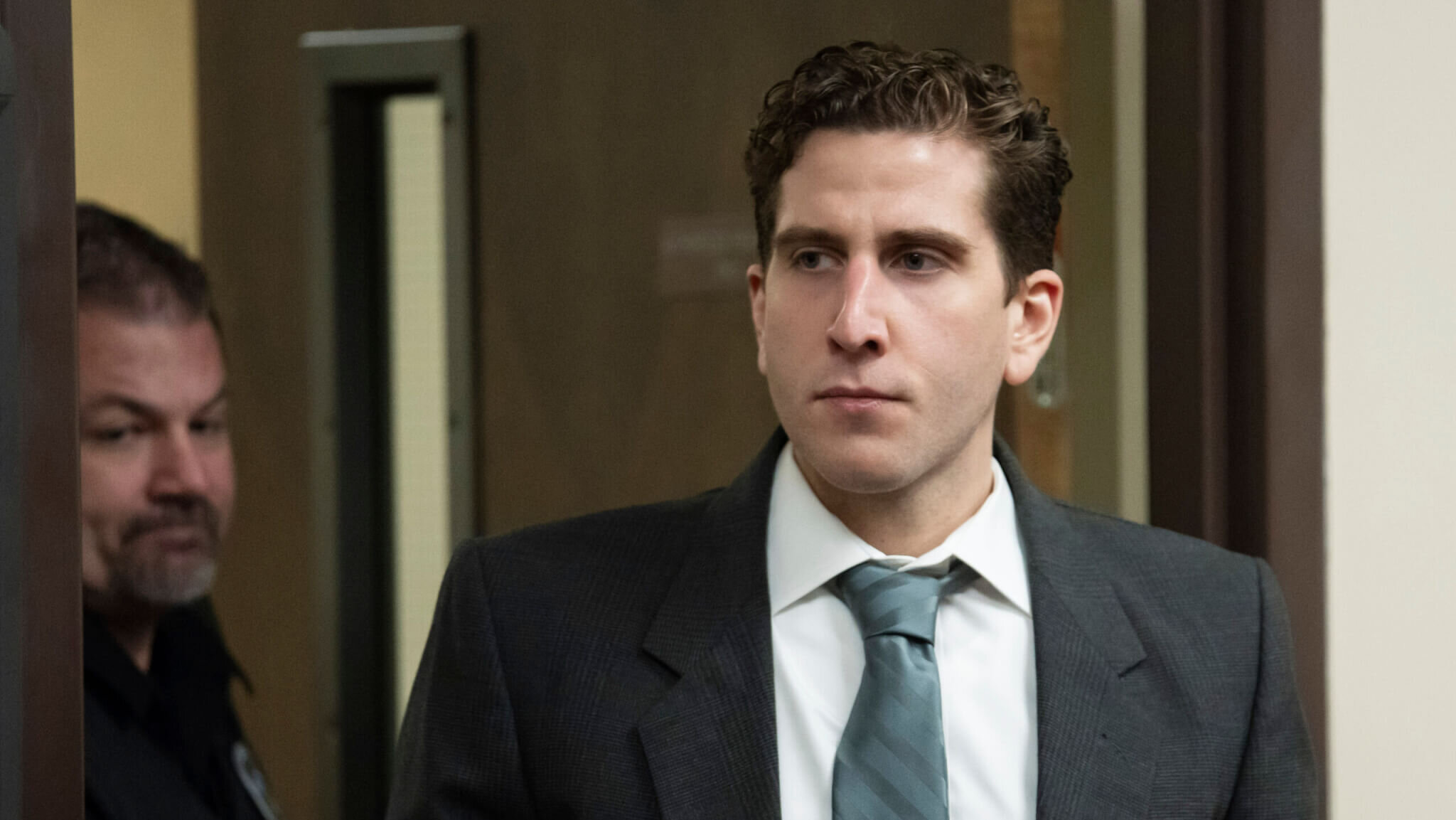TAMPA (Court TV) — After 14 days and 41 witnesses, the evidence in Michael Keetley’s retrial is in and the case is in a Florida jury’s hands.
Watch Live: Ice Cream Man Murder Retrial
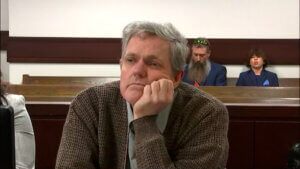
Michael Keetley appears in court March 17, 2023 during his murder retrial. (Court TV)
Closing arguments are set for Friday in the former ice cream truck driver’s trial on two counts of first-degree premeditated murder and four counts of attempted murder for a 2010 shooting. Keetley is accused of killing brothers Sergio and Juan Guitron and injuring four of their friends the morning of Thanksgiving 2010 in a largely Hispanic neighborhood in southern Hillsborough County.
READ MORE: Ice Cream Man Murder Retrial Daily Trial Updates
Prosecutors claim Keetley targeted the wrong people in retaliation for an armed robbery on Keetley’s ice cream truck that crippled his hand. Keetley’s defense maintains he did not commit the shootings, saying his injuries made him incapable of carrying out the massacre. They claim he’s been wrongly accused based on flawed witness identifications and dubious ballistics evidence.
Keetley’s retrial comes three years after a jury in his February 2020 trial could not reach a verdict. His former attorney told Court TV in 2020 that the split was 10-2 in favor of acquittal.
As frustrating as retrials can be for both sides, they create the opportunity for attorneys to fine tune their approach. Here are some highlights from the state and defense cases that caught our attention:
“KREEPER” TESTIFIED FOR A DIFFERENT SIDE
Nothing may have changed about the state’s theory motive theory, but both sides elicited new details from the man behind the alleged motive when he took the stand.
Hillsborough County prosecutors said Keetley was obsessed with finding the people who shot him and his search led to Omar Bailon, a friend of the victims who went by “Kreeper.”
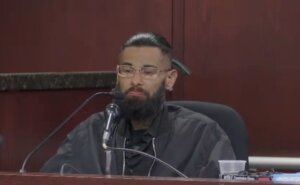
Omar “Kreeper” Bailon testifies March 22, 2023, in the retrial of Michael Keetley. (Court TV)
Barely a day went by in both trials without a mention of “Kreeper.” Keetley admitted in a December 2010 police interview to conducting his own search for suspects. But he flatly denied ever coming across the name “Kreeper.”
Nevertheless, state witnesses including Keetley’s friends, ex-girlfriends, customers testified that Keetley asked them about “Kreeper.” Investigators found a notebook in Keetley’s home with Bailon’s name and address written inside of it. A forensic examination of Keetley’s laptop found variations of Bailon’s name in several locations.
In an interview with Court TV in 2020, Bailon denied shooting Keetley. In 2020, he testified for the state. This time around, the defense called him. In both trials, neither side asked him if he was involved. Instead, they focused on his whereabouts the night of the shooting.
Bailon testified he was home asleep just a few doors down from 604 Ocean Mist Court where the victims were hanging out on the porch drinking and playing poker. Survivors of the shooting testified that the gunman pulled up in a dark minivan shortly after 2 a.m. wearing a law enforcement shirt and asked for Kreeper. When they told him Kreeper was not with them, they said the gunman ordered them to the ground, demanded their identification, then suddenly opened fire.
With more leeway to grill Bailon this time around as an adverse witness, Keetley’s attorney asked more questions about Bailon’s familiarity with Keetley.
Bailon agreed he knew Keetley as the ice cream from whom he purchased ice cream and nachos for himself and his girlfriend’s children. Bailon scaled back his 2020 testimony that Keetley was a “nice” guy and said he had normal customer service interactions with him. Bailon said he knew about Keetley’s shooting and saw a poster soliciting donations for him. After the Thanksgiving shootings, Bailon received a text message circulating through the community with Keetley’s photo that said the ice cream man was the killer. The defense has suggested that Bailon or others might have influenced the victims’ descriptions of the gunman by showing them the text, but the victims all denied seeing the text before giving law enforcement a description of the suspect.
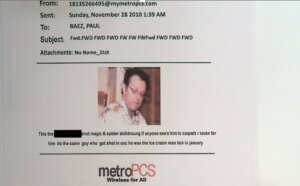
Evidence presented in the retrial of Michael Keetley. (Court TV)
Defense lawyer Richard Escobar pressed Bailon on his gang “affiliations,” a recurring theme of the defense case suggesting the shootings may have been gang related. Escobar drew attention to Bailon’s “Ocean Mist gangster” and “Ruskin outlaw” tattoos and showed the jury pictures of Bailon and others throwing up hand gestures. Now as in the 2020 trial, Bailon said he knew gang members but insisted he was not part of a gang. He brushed aside suggestions of gang activity in Ruskin.
On cross, Bailon said none of the victims were gang members. Prosecutor Jennifer Johnson also asked Bailon to confirm that it was his name and address as well as his parents’ names written in the notebook from Keetley home. Bailon agreed with Johnson that he was not friends with Keetley and had never been inside his home.
A NEW EXPERT RAISED MORE QUESTIONS ABOUT THE KEETLEY PHOTO IDENTIFICATION
The defense stuck to one of the key themes of the 2020 trial, the reliability of shooting survivor Gonzalo Guevara’s identification of Keetley in a photo lineup. Concerns about lead detective Jose Lugo’s handling of the lineup came out in the first trial, but new details that emerged in the retrial could raise more doubt about Guevara’s identification in the deliberations room.
Lugo showed Guevara the lineup while Guevara was on morphine in a hospital bed a few days after the shooting. Just as in the first trial, Lugo admitted to deviating from standard operating procedures in the following ways:
- Lugo administered the photo lineup instead of having another officer do it who did not know the suspect’s identity.
- The lineup included people who did not match the witness’ descriptions of the suspect.
- Lugo failed to number the photos on the back before showing them to Guevara, creating the risk of them getting confused, which in fact happened.
- Lugo filled out the form instead of Guevara and he filled it out incorrectly.
Lugo testified that Guevara chose the picture of Keetley, the third photo he was shown, and signed his name on the photo. Lugo then filled out the rest of the form for Guevara, writing “4” instead of “3” as the photo Guevara selected before Guevara sign the form.
Court TV’s Trial Archives: FL v. Michael Keetley (2020)
In both trials, Lugo walked the jury through his discovery of the mistake and his steps to correct it, insisting that it didn’t change Guevara’s identification of Keetley. In the retrial, a forensic document examiner for the defense challenged Lugo’s timeline of events.
In 2020, Lugo said he filled out the form for Guevara at the hospital, then had Guevara sign it. This time around, Lugo testified Guevara signed the form before Lugo filled it out at either the hospital or his office – he couldn’t remember which.
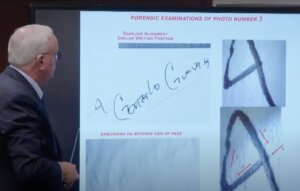
Evidence presented in the retrial of Michael Keetley. (Court TV)
Lugo’s new account is consistent with the findings of Grant Sperry, a board-certified forensic document examiner who analyzed Guevara’s photo lineup form for the defense. Sperry said an examination of pen ink impressions on the form suggested Guevara signed the form before Lugo filled it out. Why would Lugo ask Guevara to sign a blank form? We’ll never know for sure because Lugo didn’t record the lineup. And it’ll be up to the jury to decide if it matters.
As for the wrong number on the form, Lugo testified that his mistake stemmed from an ambiguous symbol on the Keetley photo that Guevara signed. Lugo said he initially thought Guevara wrote “4” on the photo in front of his signature, so Lugo wrote “4” on the form. Then, Lugo said he realized the “4” next to Guevara’s signature was actually an “X” that Lugo himself jotted down to show Guevara where to sign. Upon realizing his mistake, Lugo said he crossed out the “4,” wrote “3,” and initialed his correction.
Sperry reached a different conclusion. He testified that the alignment of the symbol and Guevara’s signature suggested that Guevara was responsible for both. On cross, Sperry agreed with prosecutor Michelle Doherty that if the symbol were an “X” the signature would not necessarily align with it and that there was no way to know for sure based on his analysis.
If Sperry is right, why would Lugo lie? And what does a “4” mean for Guevara’s identification? Even more questions for the jury to possibly consider.
NO HANDWRITING ANALYSIS
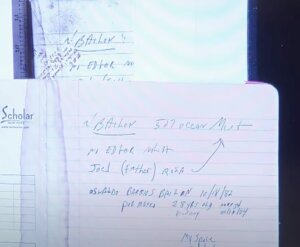
Evidence presented in the retrial of Michael Keetley. (Court TV)
In 2020, another forensic document examiner testified for the state, but not this time.
Karen Nobles of the state crime lab analyzed the notebook page with Bailon’s name and address and compared the handwriting with samples of the defendant’s handwriting. She testified that Keetley “probably wrote” the Bailon notes because they had “quite a few” individual characteristics in common with his handwriting samples and no fundamental or structural differences.
The notebook page remained a key piece of evidence in the state’s case even without the handwriting analysis. Forensic print examiner Ricki Narvarro testified that a fingerprint found in the upper left corner of the notebook page matched Keetley’s left thumb. On cross, the defense pointed out another print in the back of the notebook that Navarro was unable to match to Keetley, suggesting he wasn’t only person to lay hands on the notebook.
KEETLEY IN HIS OWN WORDS
Keetley exercised his right to not not testify for the second time in his retrial. But the jury still has plenty to consider from the defendant’s mouth.
In a voluntary interview two days after the shooting, Keetley told Det. David Schramm that he wished the people who shot him “would die a horrible death.” But Keetley denied the detective’s accusation that he took matters into his own hands.
WATCH: Detective questioned on Keetley investigation
The interview took place in an unmarked patrol car on the Keetley family property in rural Wimauma. It was Keetley’s second interview with Schramm that night after being pulled over for speeding while under surveillance by the Hillsborough County Sheriff’s Office. With Keetley’s home off limits as investigators prepared to search it, Keetley agreed to talk to Schramm in the car.
Schramm pressed Keetley to confess, saying a witness had identified Keetley “to a T.” Schramm also questioned Keetley about his ex-girlfriend’s tip that Keetley had recently bought a “pump action” shotgun that would be easier for him to use with his hand injuries.
“If you saw me handle a gun, we wouldn’t be having this conversation because you would laugh,” Keetley said, referring to his ability to use a firearm.
Keetley co-counsel John Grant questioned the retired detective on the witness stand about how his framing of the evidence to Keetley. Schramm admitted that he lied and agreed with Keetley that the shooting victims were “gangbangers” who deserved to die to curry favor with him.
Schramm said in the 2010 interview that several people told investigators that Keetley was searching for man named “Kreep” or “Kreeper” who he believed was involved in the armed robbery that crippled his hand. But Keetley told Schramm he had given up trying to develop leads and was adamant that he knew nothing about someone named Kreeper.
“I’ve never heard that name,” Keetley said.







